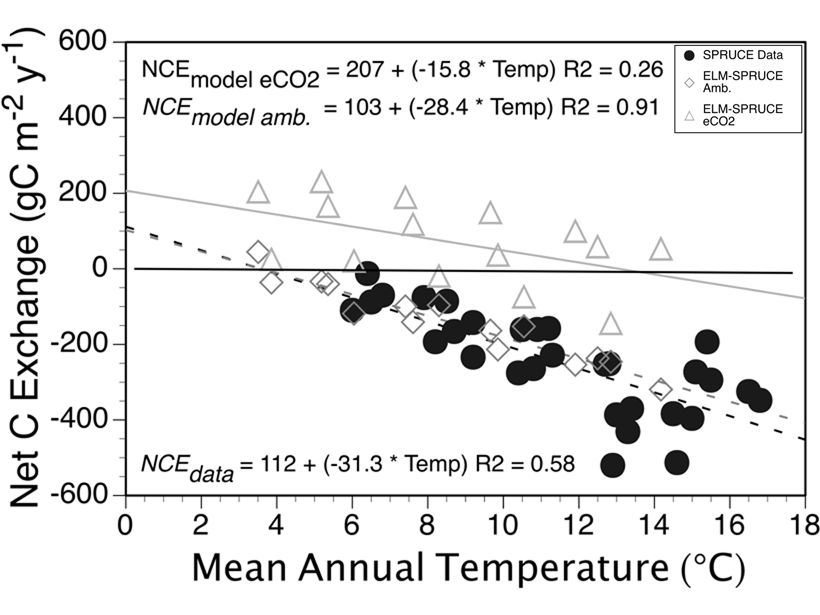Source: AGU Advances
Boreal peatlands store large stocks of soil carbon that are subject to decomposition as the region undergoes above-average warming compared to the global mean. Hanson et al. [2020] employed novel technologies to warm both above- and below-ground parts of the ecosystem, both with and without elevated CO2. Not surprisingly, carbon was lost with warming, but contrary to model predictions, the elevated CO2 treatment had minor effects. We learn new insights when models fail. In this case, it appears that the dominant plants of these northern Minnesota bogs do not respond significantly to CO2 enhancement, as most plant models predict. Revised models for this important biome now need to be tested at other sites to improve further our understanding of the likely carbon losses that could contribute to accelerating the rate of climate change.
Citation: Hanson, P, Griffiths, N., Iversen, C., Norby, R., Sebestyen, S., Phillips, J., et al. [2020]. Rapid Net Carbon Loss From A Whole-Ecosystem Warmed Peatland. AGU Advances, 1, e2020AV000163. https://doi.org/10.1029/2020AV000163
—Eric A. Davidson, Editor, AGU Advances
Text © 2020. The authors. CC BY-NC-ND 3.0
Except where otherwise noted, images are subject to copyright. Any reuse without express permission from the copyright owner is prohibited.

